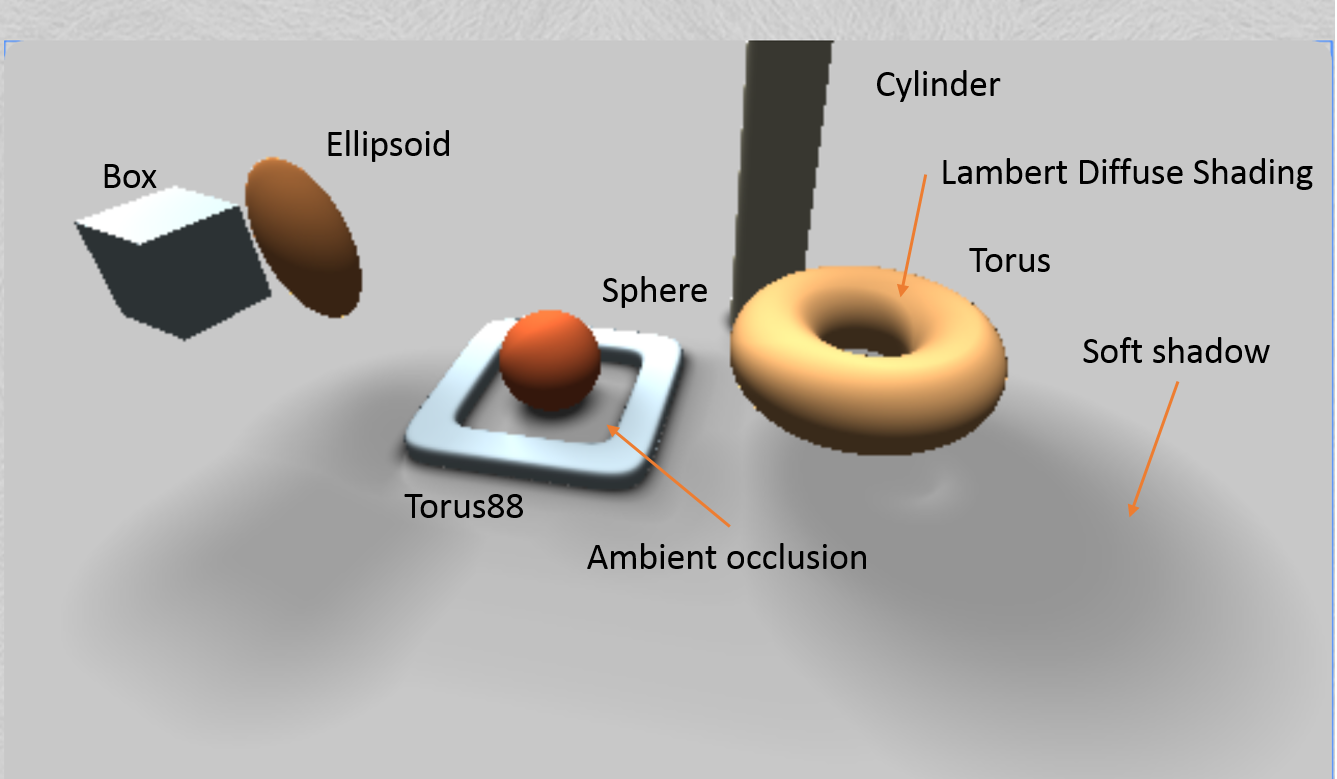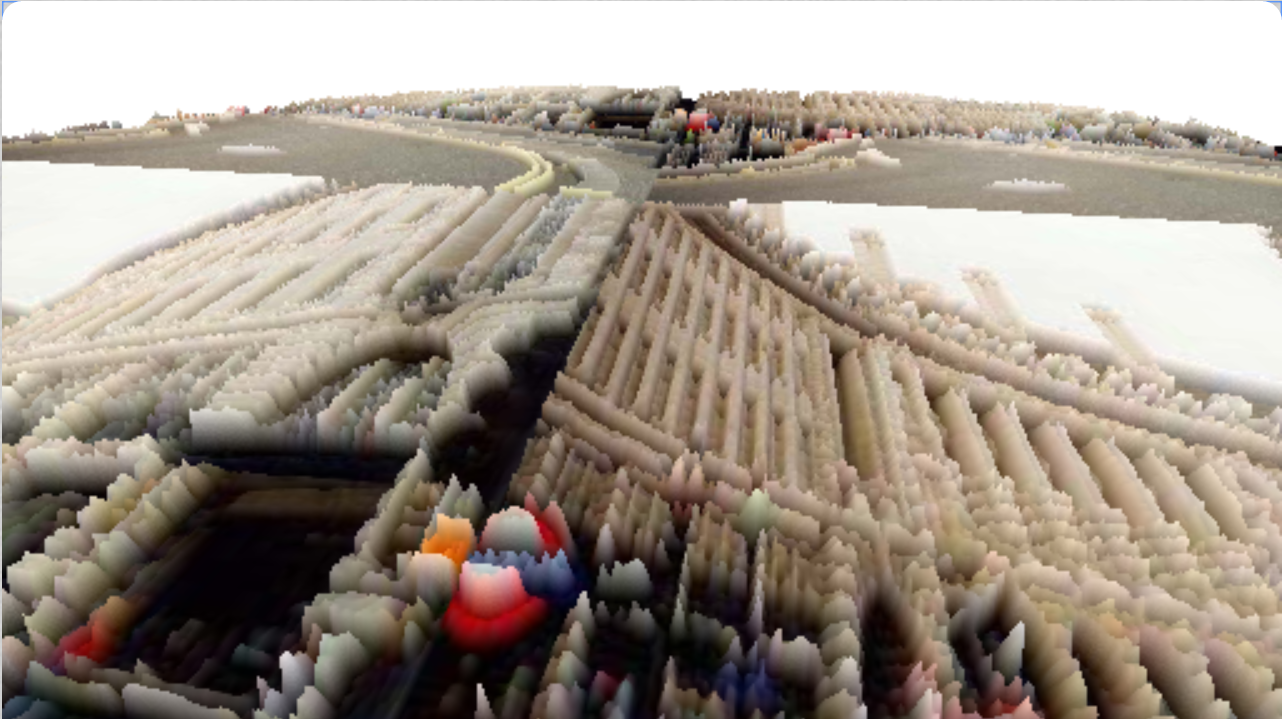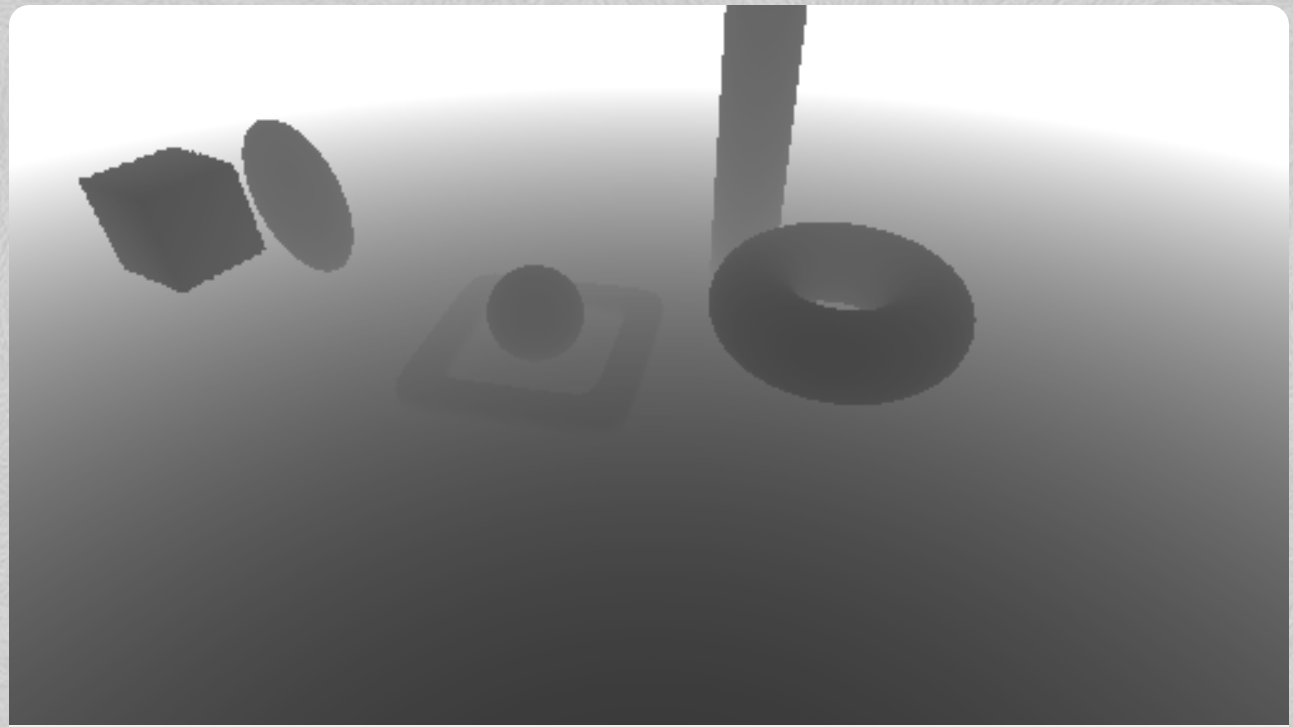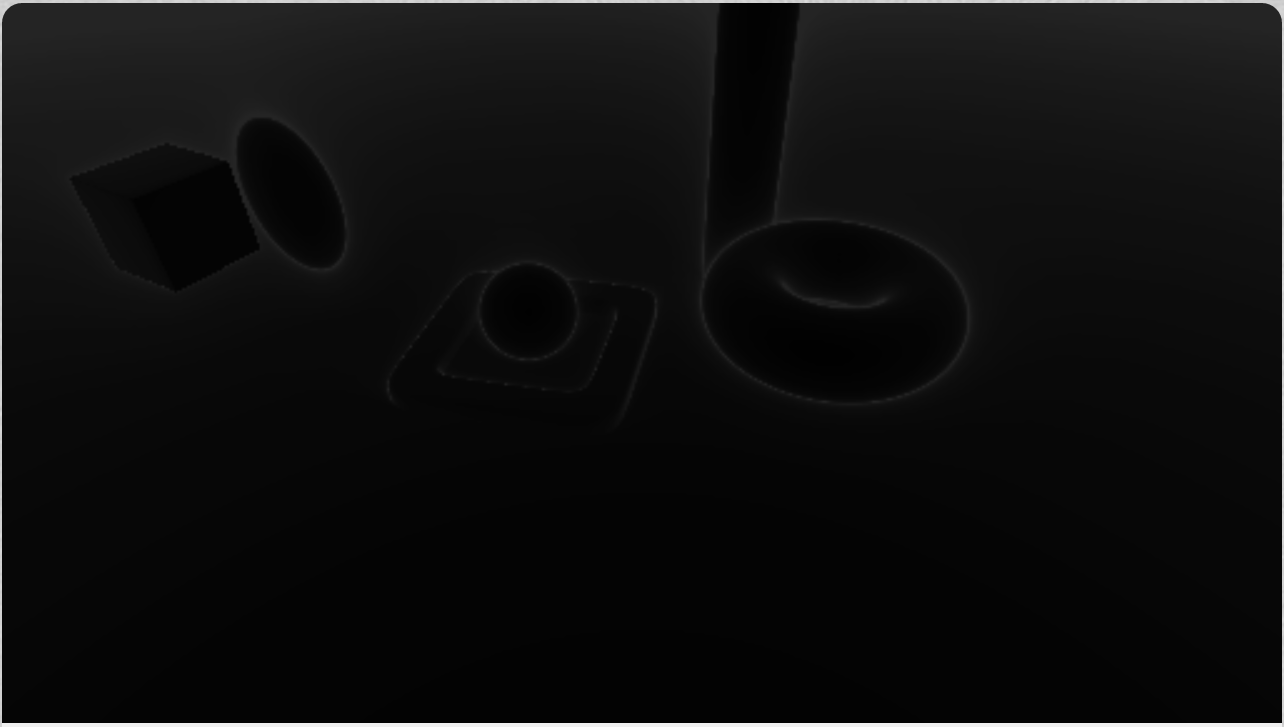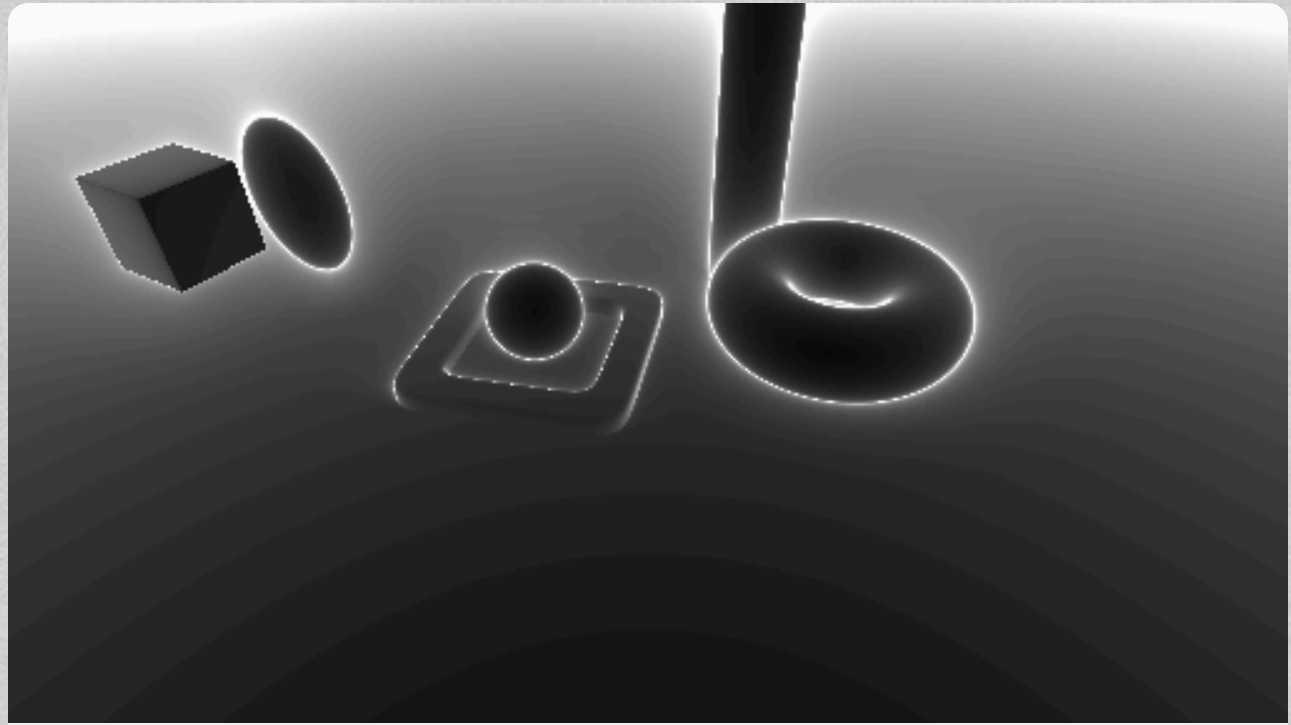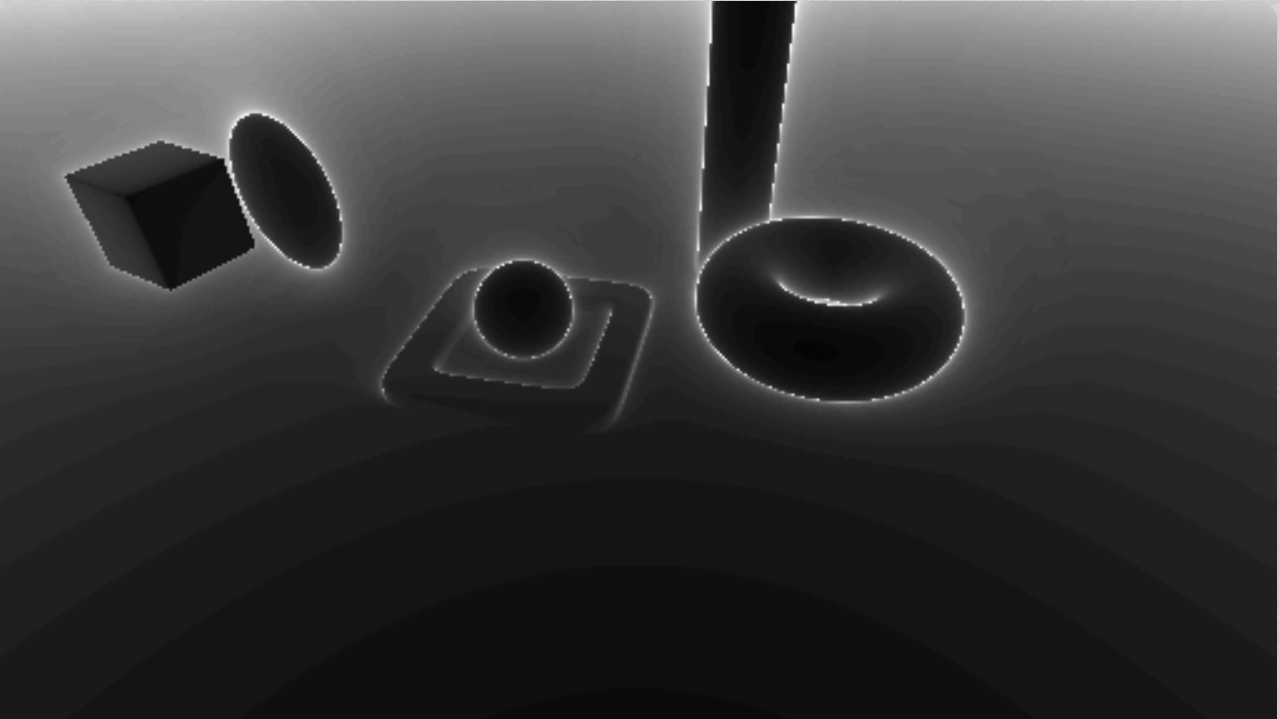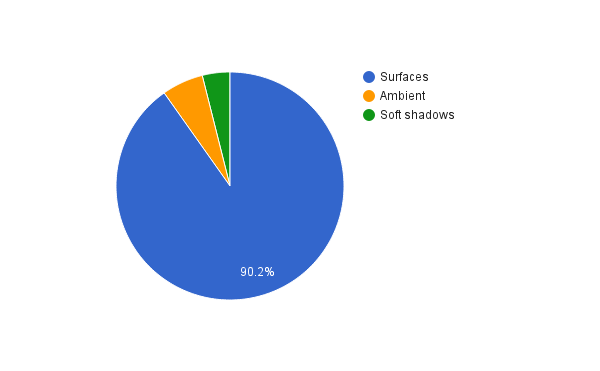GLSL Ray Marching
University of Pennsylvania, CIS 565: GPU Programming and Architecture, Project 5
- Levi Cai
- Tested on: (TODO) Google Chrome on
- Windows 8, i7-5500U @ 2.4GHz, 12GB, NVidia GeForce 940M 2GB
This Shadertoy uses material from the following resources:
- http://www.iquilezles.org/www/articles/terrainmarching/terrainmarching.htm for height map methodology
- http://www.iquilezles.org/www/material/nvscene2008/rwwtt.pdf
- http://www.iquilezles.org/www/articles/distfunctions/distfunctions.htm for SDFs and Transformations
- https://www.shadertoy.com/view/Xds3zN for ambient occlusion and soft shadows
- http://www.neilmendoza.com/glsl-rotation-about-an-arbitrary-axis/ for axis/angle to matrix rotations
- Morgan McGuire, Williams College. Numerical Methods for Ray Tracing Implicitly Defined Surfaces (2014) for over-relaxation
- Naive Ray Marching
- Sphere Tracing
- 7 SDFs: Plane, sphere, ellipsoid, torus, torus88, box, cylinder
- Arbitrary transformations of objects
- Debug views for number of ray march iterations and distances to surfaces
- Simple lambert lighting scheme
- Height Maps
- Over-relaxation for sphere tracing optimization
- Soft shadowing (both heavily influenced by IQ's shadertoy example...)
- Ambient Occlusion
- Naive coloring (lots of branch divergence!)
Height mapping is created by taking in a texture image and using it as a height map (the color intensities are used as scaled heights). These are then computing by using a naive ray marching method and comparing to the height of the map at each step, then taking the color at that location and using it as the map's color at that point.
Black is 0, white is max number of steps.
Naive:
Runs at 20FPS. Goes faster when objects are closer because they terminate much faster. Same with increasing stepsize and resoluton. However, regardless, sphere tracing removes this necessity all together.
Sphere:
Runs at 60FPS. Here we can see some of the downsides of sphere tracing around the edges of objects. Objects themselves are much faster to compute, but around the edges, because sphere tracing computes distances to nearest object (not necessarily in its path), it will take much smaller step sizes near edges of objects, hence why the edges are very white and look like they distort the background around them.
Black is 0, white is max number of steps.
Normal sphere:
Over-relaxed sphere:
It is clear from the images that the over relaxed method takes less steps in most fragements when compared with the normal sphere stepping. However, due to my implementation, it seems that in certain scenarios it is actually slower when there are many objects nearby the camera frame. I believe this might be because of the additional distance computation I do. It might make sense to somehow only do 1 distance computation per iteration and re-use the previous computation (I do 2 per iteration) which might be the cause of this.
The performance hit for each depends on the number of iterations added in order to compute at each fragment, both are set to 10-15 iterations, hence similar performance hits.
The largest branch divergence hit is my super naive implementation of color, in the getColor function, which does 4-condition branch to determine what color to use given a material. A faster way to implement this is just to apply the color directly directly in the map function, but I think this illustrates the issue with branches quickly, and was quick to implement. Adding this feature drops my runtime from 60FPS to 45FPS.
Other branch divergences occur in all of the sphere/ray marching methods when fragments are finished computing while others are not. The closer the ratio is to half and half, the worse the performance I believe.
